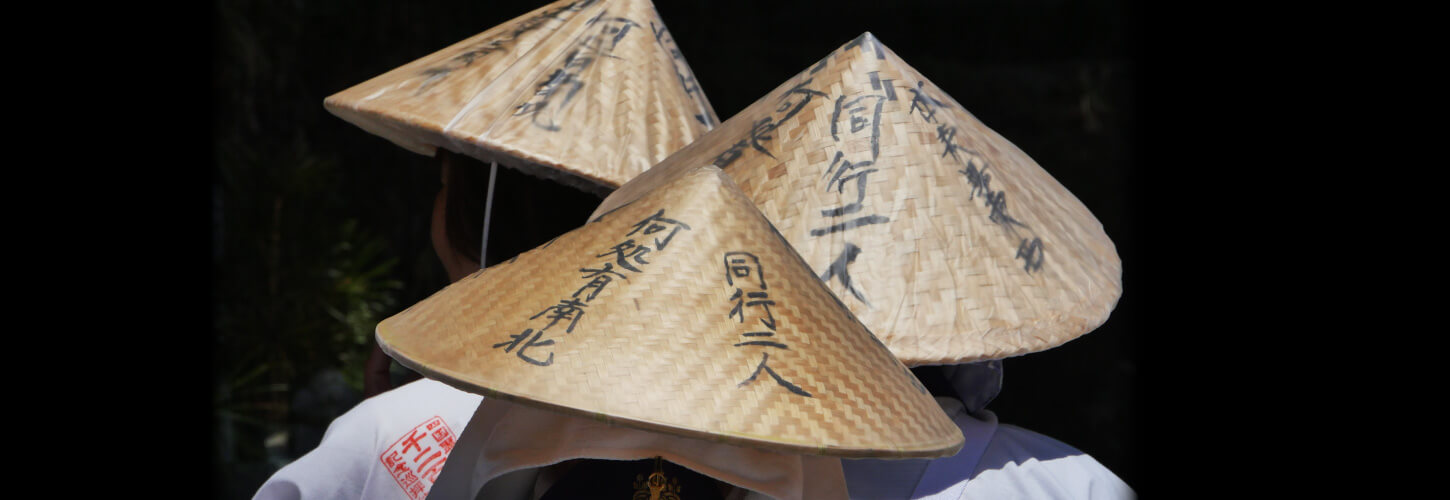Origin of Shikoku Henro
Since ancient times, Shikoku was a place far from the center of the country and a place for various ascetic trainings. It is said that Daishi (Kōbo Daishi, Kukai), who was born in Sanuki, was also trained in this area and selected 88 temples and other places to create 88 sacred sites in Shikoku. It is a pilgrimage to journey through the 88 sites of the sacred ground, the sites of the master. The original pilgrimage was centered on monks. Since then, many people from all over Japan have been on pilgrimage along with the rise of people’s faith in Daishi (Kobo Daishi faith). And as a place related to the master, it has developed as a sacred place that everyone wants to visit at least once in their lifetime.
Kobo Daishi

Daishi-sama (Kobo Daishi / Kukai) was born in Iki “Kanfugaura” (currently Zentsuji City, Kagawa Prefecture) in 774. His young name was Mao, and it is said that he was wise beyond his childhood. When he was 15 years old, he went up to Nagaokakyo to become a high-ranking official (bureaucrat), and entered university at the age of 18. At that time, he met a practitioner who was practicing Buddhism at Yoshino and Mt. Katsuragi, and was greatly influenced by the Buddhist teachings. Therefore, he felt compelled to quit his university studies despite all opposition, and for the purpose of seeking Buddha’s law, received strict training, such as the method of holding a temple in Ishizuchiyama, Oiso, and Murotozaki, where he was born. . The days of the training were written in “Sankyo Taiki”. Later, his name was changed to “Kukai” and he went to Tang as a delegation of ambassadors to learn all of Esoteric Buddhism from Keika Kazuo at Seiryu-ji Temple in Chang’an. After returning to Japan, he was granted permission to create Shingon Buddhism, and was credited with “Mt. Koya” and “Toji”. In addition, he was devoted to educational dissemination and social projects such as the establishment of the first educational institution for people in Japan, “Gakki Tanchi-in” and the construction of Mannoike. Aiming for a way of life in which all of us are able to make full use of our abilities and talents. The master who was recommended all to make an effort was admitted at the age of 62 in Koyasan in 835. In honor of his achievement, in 1921, the Emperor Kashiwa was awarded the Daibo degree of Kobo Daishi.
Two traveling together

When you are practicing pilgrimage, you are always with the master (Kobo Daishi).
In the case of Shikoku Henro, as a symbol of it, the walking staf is regarded as the master himself.
Even if there are multiple pilgrims, there are two persons who are accompanied by an individual with his master.
Sand stepping
Sand-stepping means collecting the “sand” from each of the eighty-eight shrines in Shikoku, and visiting them while stepping on the “sand”, regarding the “sand” as a temple. The benefit is said to be the same as actually having gone on a pilgrimage. In the Edo period, the Shikoku 88 Sites, which are modelled after the Shikoku 88 Sites, are called the Shikoku 88 Sites, which are called “Sago”, and the Ushio Site where the sand is enshrined. A lot of sand step temples were built all over Japan. There are still many sand steps in temples.
In addition, “sand stepping” is something that makes Shikoku Henro feel closer to those who cannot do it easily. With the passage of time, Shikoku has become much closer, but there are still people who cannot visit Shikoku for various reasons. Therefore, Shikoku 88 Hachijo Reijokai hopes that even if you can’t come to Shikoku for some reason, you can touch the charm of Shikoku Henro even a little, and bring a set of sand steps with you. We planned a project called “Sanding Pilgrimage-Delivering Hearts” (hereinafter “Sand Pilgrimage”). This “sand pilgrimage” can be performed anywhere, as long as there are four long desks, and anyone can perform “sand pilgrims” and can connect with Buddhas and masters.
Please check the event information for the status of “Sand Stepping” and “Sand Stepping Pilgrimage”. In addition, if you have any inquiries regarding “Sand walking” or “Sand walking pilgrimage”, please contact Shikoku 88 Sites.
※Currently, the official sand step of the sacred ground is under preparation.
